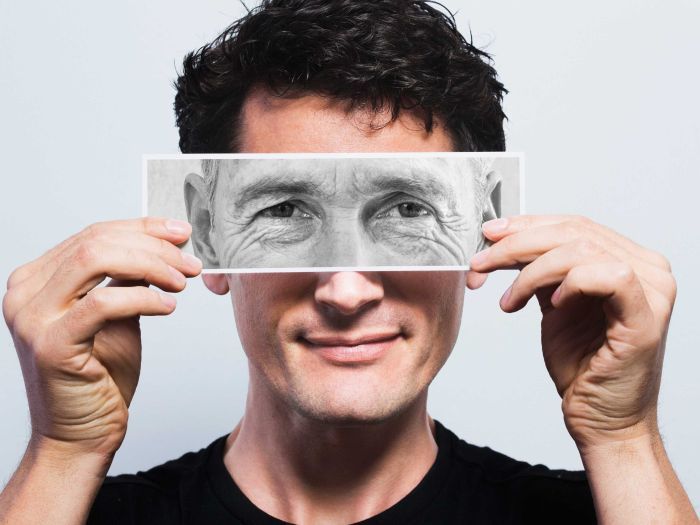|
It’s not just our skin, muscles, bones and joints that age as we grow old. We also experience abundant changes in the physical, mental and social health and among these are eye and ear changes that might result in vision and hearing loss. The World Health Organization estimates more than 285 million people worldwide to be visually impaired, with 82% of people affected by blindness coming under the 50+ age group.
Bare Minimal Changes that Go Unnoticed Your hair might turn white and you might experience problems with knee routines, but rarely do you notice any changes that occur to your eye. Your life might push you to reach for your glasses more often to read something, stare at the bus boards to grasp the number written or you might even reach for your navy-blue socks assuming it to be black. In your hurry-burry lifestyle, you often miss out on these small indications and realization sets in only when it impacts your vision to a greater extent. Its understandable that age-related changes to vision are not preventable but one can always reduce the risk for serious eye disease and safeguard your vision as much as possible. Vision care is not something that must be introduced only when you enter your 40s, 50s or 60s. Young children, teenagers and youngsters too must take precautionary steps such as eating produce rich in beta-carotene such as carrots, apricots and include green leafy vegetables in meals every day to keep their eyesight clear. In older adults, blurred vision and blindness prevail as one of the top five causes of disability as decreased vision affects your daily activities such as cooking, reading, shopping or even walking. Blindness strikes a hard blow on the quality of life of the individual greatly. Changes to Your Eyes As you Age There are a couple of changes that happen as you age. The white of the eye is affected due to ultraviolet light, membranes of the conjunctiva start thinning leading to dry eye due to decreased tear production and eyes of the muscles also lose their strength as in the case of muscles present in other parts of the body. The curved lens at the front of your eyes might be among the top body parts that show signs of aging. The lens captures the light and forms images on the retina at the back of your eye helping you envision near and far objects clearly. As the person ages, the lens hardens and starts troubling you. This can happen even in your 20s or your 60s. Some of the common age-related changes that happen in the elderly population include: Presbyopia: This can happen to any person over the age of 35 more predominantly present starting from your early to mid-40s and beyond. These adults find difficulty focusing on objects at close distances such as reading a book or working on the laptop. You start holding your book far away from yourself to find some comfort while reading it. This change in your eye’s ability to focus is known as presbyopia which progresses over time. Even newspaper content or menu cards in restaurants seem to appear blurred. Wearing glasses are the best solution to this and if you are already wearing one, problems with near vision require the need of using bifocal or multifocal lenses to see clearly. Require Brighter Surroundings: The muscles that control your eye’s pupil size weaken, become smaller and show decreased response to light changes. This exists as one of the main reasons for elderly people requiring almost 3 times brighter light than rest of us. Glare: Driving a car or bike as you grow old becomes problematic due to scattering of light. As you drive, you are bothered by headlights at night or sun rays that reflect off windshields or pavement during the day. That’s because, changes to the lenses in your eyes make the light that enter the eyes to be scattered rather than fall precisely on the retina which becomes the main reason for glare. A vision test that requests the individual to read out letters on a white board is not the solution to this problem. One needs to analyze issues such as contract sensitivity, peripheral vision and vision processing speed. Glaucoma: Damage to optic nerve is the main reason for glaucoma which can disturb your peripheral vision. One might not notice it until it reaches advanced stages and leaving it untreated might result in vision loss and blindness. Diagnosis makes the disorder easily treatable with eye drops, laser and surgery. Age-related Macular Degeneration (AMD): Straight lines that appear wavy, distorted or a gradual vision loss in the center of your eyesight are signs of AMD. As the name suggests, AMD affects the macula, the part of the retina responsible for central vision. The center of your eye appears empty and a routine eye checkup can find out this problem. Early diagnosis and treatment of the disease can preserve your vision lifelong. A study by researchers shows that combining certain vitamins and minerals can prevent AMD from becoming severe. While fish oil supplements fail to benefit people with AMD, a diet rich in green leafy vegetables such as spinach and kale, and fish avoid rapid progression of the disease. Diabetic Eye Disease: This is one of the most common causes of blindness and can damage the tiny blood vessels inside the retina. Maintaining proper blood sugar levels can obstruct or minimize the impact of the disease. Floaters and Flashes: Each of us might see spots of floaters in the eyes which appear as small particles floating in the fluid that fills the inside of the eye. Quite intruding but never affecting vision, they are a part of our eye’s natural aging process. If in case you see a huge number of floaters along with bright, flashing lights it is better to visit your ophthalmologist immediately as it could be a sign of retinal tear which needs immediate treatment. The best way to detect any of these eye problems is to visit your ophthalmologist regularly for eye check-ups. The physician will administer drops to your eyes so that the pupils are enlarged or dilated. This makes it easier for the doctor to diagnose any problems in the eye. Leading a healthy lifestyle that includes eating nutritious foods, exercising regularly and staying active reduce the chances of eye problems and protects the eyesight. Get in touch with registered dietitian nutritionists at www.firsteatright.com to start leading a healthy lifestyle but without missing out on all the fun elements in your eating habits and working out ways. Comments are closed.
|
AVOID FRAUD. EAT SMART.+91 7846 800 800
AuthorDietitian & Nutritionist Dr. Nafeesa Imteyaz. Archives
July 2024
Categories
All
Dr. Nafeesa's Blog @blogspot |
- Home
- Written Testimonials
- Consult
- Clinics
- Blogs
-
Diet & Nutrition
- Diabetes Reversal
- IVF IUI not needed for PCOS PCOD Infertility
-
Medical Nutrition
>
-
Disease & Conditions
>
- Infertility | PCOS
- Diabetes Mellitus
- Cholesterol
- Hypothyroid
- Kidney Problems
- Hypertension
- Cardiovascular Diseases
- Liver Diseases
- Gastro intestinal disorder
- Cancer
- Metabolic Disorders
- Orthopedic Disorders
- Eating Disorders
- Dietary Recall
- Weight Record Filled By Clients
- Online Payment Transaction Details
- Online Clients Weight Check Form
- Our Program Package Service Charges
- Weight Record 2017 Clients
- Measurements sent by Clients
- Terms & Conditions Of Payment
- Thanks. Your Form is Submitted
- Video Testimonials
- Lifestyle & Wellness
- Lifestyle & Wellness Blog
- Allergy & Intolerance
- Weight Loss / Gain
- Weight Loss / Slimming Blog
-
Disease & Conditions
>
- Life Cycle Nutrition >
- Sports Nutrition >
- Integrity in Nutrition
- Knowledge Centre
© COPYRIGHT 2022. ALL RIGHTS RESERVED. FRST HEALTHCARE PVT LTD.
Dr. Nafeesa Imteyaz of First Eat Right clinic, is the Best Dietitian Nutritionist in Bangalore. Best Dietitian Nutritionist in Pune. Best Dietitian Nutritionist in Hyderabad. Best Dietitian Nutritionist in Chennai. Best Dietitian Nutritionist in Mumbai. Best Dietitian Nutritionist in Delhi. Best Dietitian Nutritionist in Kolkata.


